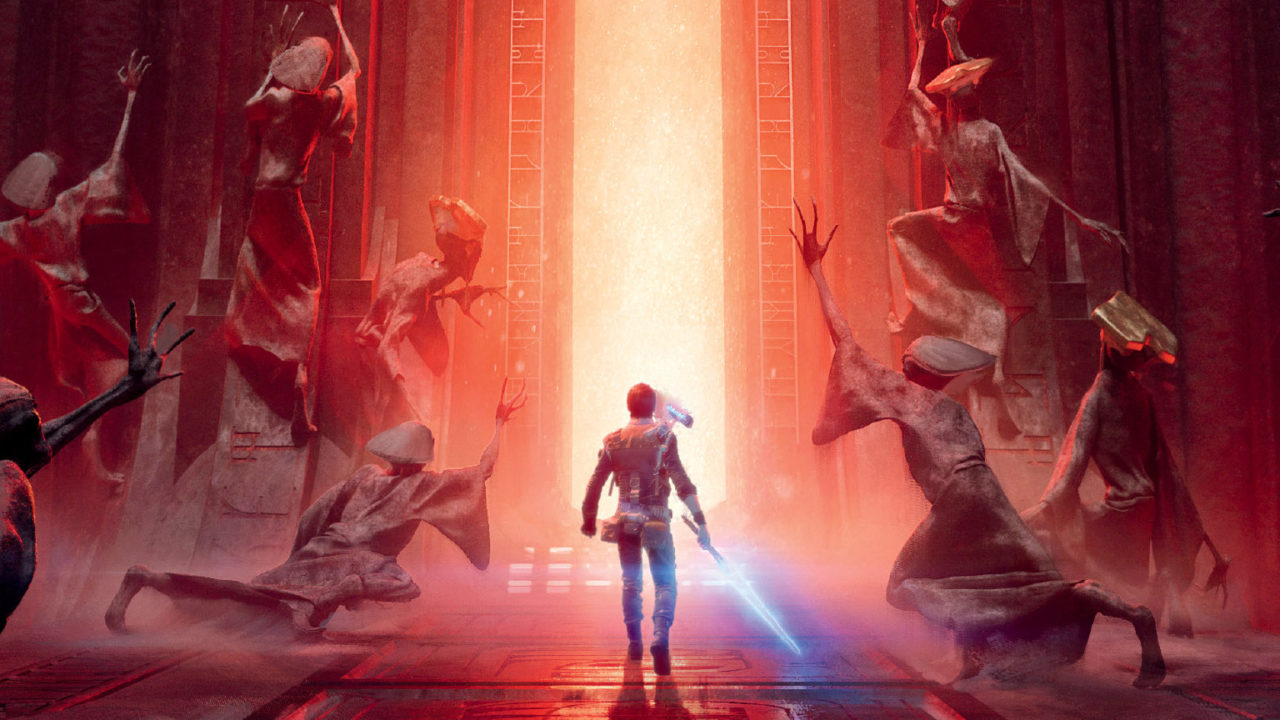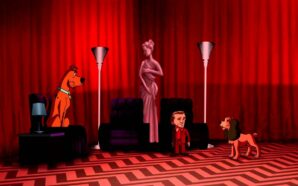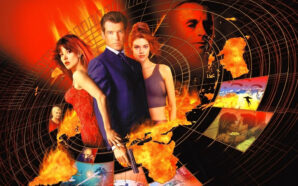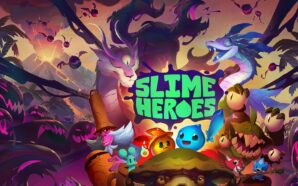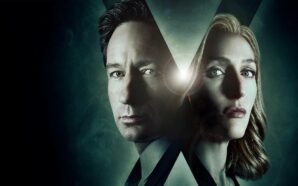The Last of Us Part 2 is now the pre-eminent ‘AAA’ third-person gaming experience and its release feels like something of a watershed moment. While it’s easy to drift into hyperbole, it seems as if there will be a pre-The Last of Us Part 2 era of gaming and a post-The Last of Us Part 2 era of gaming. There’s an awful lot that similar games can learn from Naughty Dog’s latest release, both in terms of larger storytelling and smaller details. It’s a game about violence and its impacts. Not just thematically but rather these messages are reinforced through gameplay in shockingly effective ways. The Last of Us Part 2 poses a moral quandary that no game needs to take more notice of, and learn to replicate, than the upcoming sequel to Star Wars Jedi: Fallen Order.
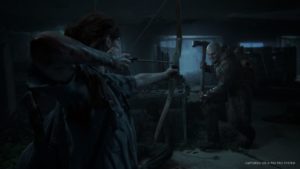 Video games have always struggled with the often-opposing features of gameplay and story/character. You want to play a fun action game where you shoot thousands of enemies, but acknowledging this within the game will draw attention to the fact that the protagonist committing these actions is a mass murdering psychopath. For example, it goes unsaid in the Uncharted games that the lovable Drake murders the population of a small country in each instalment. Naughty Dog intelligently tackled this very issue in The Last of Us Part 2 by highlighting the violence enacted by the playable characters, even building a story around it, but without compromising the fun action gameplay. There are many, many enemies to dispatch in enjoyable and brutal ways that keep the game engaging and yet every NPC death only adds to the game’s theme and narrative rather than take away from it like they usually do. It’s a game where the characters being mass murdering psychopaths is the whole point.
Video games have always struggled with the often-opposing features of gameplay and story/character. You want to play a fun action game where you shoot thousands of enemies, but acknowledging this within the game will draw attention to the fact that the protagonist committing these actions is a mass murdering psychopath. For example, it goes unsaid in the Uncharted games that the lovable Drake murders the population of a small country in each instalment. Naughty Dog intelligently tackled this very issue in The Last of Us Part 2 by highlighting the violence enacted by the playable characters, even building a story around it, but without compromising the fun action gameplay. There are many, many enemies to dispatch in enjoyable and brutal ways that keep the game engaging and yet every NPC death only adds to the game’s theme and narrative rather than take away from it like they usually do. It’s a game where the characters being mass murdering psychopaths is the whole point.
Now that The Last of Us Part 2 has put the spotlight on the actions of video game characters, Fallen Order 2 needs to continue the discussion. While I very much enjoyed the first game, never has the contrast between character and gameplay been so vivid. You are a Jedi, resisting the dark side and the ultimate moral pacifist. And yet you slaughter innocent animals and kill the inhabitants of planets you visit. Cal journeys to the planet of Bogano, a place rich in the force and – while under the influence of the player – wipes out the native fauna. Next you can travel to Dathomir where the humanoid species are endangered after a brutal Separatist attack during the Clone Wars, and are purely protecting their home, but that doesn’t stop Cal having to butcher them, despite me not wanting to. Cal Kestis is a Jedi but in order to create combat for the game he is forced to act like a Sith, completely undermining the story being told and creating huge narrative dissonance.
 I’m not suggesting that Respawn dedicate the entire sequel to the idea of video game violence like The Last of Us Part 2, but Cal’s violent actions need to be at least discussed. There should always be enemies to fight but there should also be consequences for such actions. It’s fun to hack, slash and amputate with a lightsaber – and that shouldn’t go anywhere – but there needs to be a self-awareness of what the lead Jedi character is doing rather than simply be ignored, seen as a necessary casualty of the medium. The Last of Us Part 2 proved that that doesn’t need to be the case.
I’m not suggesting that Respawn dedicate the entire sequel to the idea of video game violence like The Last of Us Part 2, but Cal’s violent actions need to be at least discussed. There should always be enemies to fight but there should also be consequences for such actions. It’s fun to hack, slash and amputate with a lightsaber – and that shouldn’t go anywhere – but there needs to be a self-awareness of what the lead Jedi character is doing rather than simply be ignored, seen as a necessary casualty of the medium. The Last of Us Part 2 proved that that doesn’t need to be the case.
There should be discussions with Cere or Greez about Cal feeling guilty for his actions. It doesn’t have to be pushed as far as with Ellie in The Last of Us, and Cal can ultimately come to the realisation that killing all these Stormtroopers is necessary, but what’s important is that it’s acknowledged. Nightsister Merrin’s whole history and motivation has to do with the eradication of her sisters and yet she doesn’t hold any grudges at all towards Cal butchering hundreds of the brothers under her command. That’s a big problem that weakens any relationship between the two of them. I think a conversation between Cal and Merrin on this subject is vital, and it creating a barrier between them in the sequel would be good storytelling and character development.
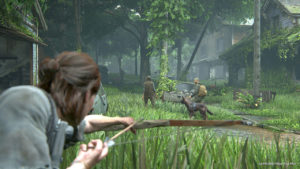 One of the best things about The Last of Us Part 2 is the NPC dialogue during encounters. When someone comes across the body of a fallen comrade, they cry out in pain and anger, telling the rest of the group of their morbid discovery and naming the fallen (I killed a lot of people called “Kerry”). This really does make the NPC grunts feel like real people that you’re murdering. On my second playthrough I sneaked past many of them because I didn’t want to kill them – evidence that the game truly succeeded in the message it was presenting. At one point I laid down a trap mine which blew a dog into gory viscera and its owner’s reaction to seeing such a horrendous thing was so upsetting that I had to pause the game and go for a walk. It would be great to have something like this in Fallen Order 2. Some way to make the NPCs feel like more than just target practice. Cal could feel guilt and question himself after having to kill, and the game could be an examination of a Jedi’s actions in a time of great darkness and conflict, just like what The Clone Wars animated series did so well.
One of the best things about The Last of Us Part 2 is the NPC dialogue during encounters. When someone comes across the body of a fallen comrade, they cry out in pain and anger, telling the rest of the group of their morbid discovery and naming the fallen (I killed a lot of people called “Kerry”). This really does make the NPC grunts feel like real people that you’re murdering. On my second playthrough I sneaked past many of them because I didn’t want to kill them – evidence that the game truly succeeded in the message it was presenting. At one point I laid down a trap mine which blew a dog into gory viscera and its owner’s reaction to seeing such a horrendous thing was so upsetting that I had to pause the game and go for a walk. It would be great to have something like this in Fallen Order 2. Some way to make the NPCs feel like more than just target practice. Cal could feel guilt and question himself after having to kill, and the game could be an examination of a Jedi’s actions in a time of great darkness and conflict, just like what The Clone Wars animated series did so well.
The are other actions Respawn could take to lessen the disconnect between Cal’s Jedi status and his murderous nature in the sequel. There could be a variety of more violent and aggressive creatures and enemies that don’t feel as wrong to kill as the innocent animals of Bogano. The combat could be much more about defence, maybe even featuring stealth elements and non-lethal takedowns, although I know many gamers are just going to want to use a lightsaber. Following in the footsteps of characters such as Ezra Bridger from Star Wars: Rebels, I think it would be wise to have Cal develop the force ability to communicate and bond with animals in the future, allowing him to feel the pain he’s caused them. It would be the Star Wars equivalent of Spock’s mind meld with the Horta in the classic Star Trek episode ‘The Devil in the Dark’ where we discover the savage monster was only protecting its young. It would be similar to one of the best moments of The Rise of Skywalker where instead of fight the Vexis, Rey force heals it. At the moment Cal is instead more likely to follow the lead of the Mandalorian and kill an innocent creature like the Mudhorn to steal its egg. And yet he calls himself a Jedi.
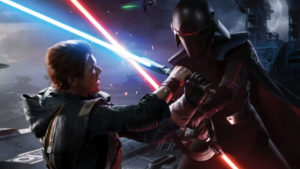 There doesn’t have to be such a huge disconnect between what happens in cutscenes and what happens in gameplay in terms of character actions and motivations. My actions should always enforce the story being told, not discredit it. The Last of Us Part 2 changed the game for storytelling in the medium, and Fallen Order 2 – an action game where the protagonist is a pacifist – is the perfect place to continue the examination of video game violence without disrupting the entertainment of it.
There doesn’t have to be such a huge disconnect between what happens in cutscenes and what happens in gameplay in terms of character actions and motivations. My actions should always enforce the story being told, not discredit it. The Last of Us Part 2 changed the game for storytelling in the medium, and Fallen Order 2 – an action game where the protagonist is a pacifist – is the perfect place to continue the examination of video game violence without disrupting the entertainment of it.
Did you take issue with Cal’s actions in the first game? Is the disconnect between video game storytelling and gameplay just an acceptable casualty of the medium? Let me know in the comments and be sure to geek out with me about TV, movies and video games on Twitter @kylebrrtt.




